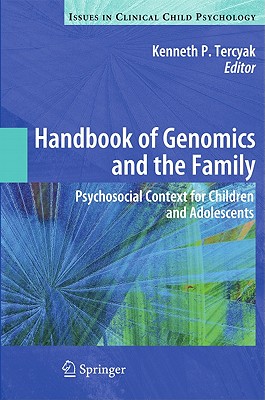Handbook of Genomics and the Family: Psychosocial Context for Children and Adolescents (2010)
$404.99
Description
Today, individuals have greater access to information about their healththaneverbefore(Randeree,2009;Eysenbach,2008).Muchofthis changeisdue, inlargepart, toadvancesinbiotechnologyandtheseque- ing of the human genome (Manolio & Collins, 2009). It is now possible, forexample, forindividualstologontotheInternetand, forafeeofs- eral hundred dollars, order an at-home DNA collection kit and have the resultsofamyriadofgenetictestsdelivereddirectlytotheire-mailinbox (Gurwitz&Bregman-Eschet,2009).Insomecases, thesetestresultsmay indicatepersonalriskforcommonchronicdiseases, suchascertainforms ofcancer, diabetes, cardiovasculardisease, andseveralothers.Companies marketing these test kits often claim that promoting greater access to and awareness of the association between genes and health, and one’s genetic susceptibilities to disease, leads to more proactive and insig- fulmethodsofindividualhealthmanagement(Hogarth, Javitt,&Melzer, 2008). Moreover, it is consistent with an emerging trend in medicine – that of consumer-oriented medicine – which places health information toolsdirectlyinthehandsofpatientsunderthepremiseoffosteringbetter patient-providercollaboration(Silvestre, Sue,&Allen,2009). Though the principles behind this direct-to-consumer approach to genetics seem laudable and perhaps even exciting, there is consid- ablecontroversyastowhat, ifany, utilitytheinformationactuallyholds (Geransar&Einsiedel,2008;Wasson, Cook,&Helzlsouer,2006).Unlike geneticteststhatarediagnostic(e.g., chromosomeanalysisforDowns- drome)orhighlypredictive(e.g., BRCA1andBRCA2testingforhereditary breast-ovarian cancer risk), this new wave of presymptomatic predictive genetictestsforcommondiseaseyieldsresultsthataremuchmoreunc- tainbecausethestatisticalmodelsonwhichtheyarepresentlybasedare imperfectandwithlimiteddata(Ng, Murray, Levy,&Venter,2009). Theabovescenarioraisesmanyquestionsfortoday’shealth-carec- sumers. For example, for whom is this information applicable, and for whatpopulationsorsubpopulationsisitnot?Underwhatcircumstances might this information be useful, and when should it be disregarded as irrelevant?Andperhapsmostimportantly, what, ifanything, canbedone inlightofinformationaboutpersonalgeneticrisktoeffectivelylowerthe oddsofbecomingsickandraisetheoddsofstayinghealthy? vii viii PREFACE Becausetheprevalenceofmostdiseasesvariesasafunctionofage, gender, race/ethnicity, and other personal characteristics, answers to these questions are complex and many are just beginning to be und- stood(Khouryetal.,2009).Someexpertshaveconcludedthattheanswers tosuchquestionsremainoutofreachatthepresenttimeandmayc- tinue to be elusive for another 5-10 years (Frazer, Murray, Schork, & Topol,2009).Yet, twenty-?rstcenturyhealth-careconsumers, providers, and policy makers face these choices now about incorporating personal genetic information into health management and often do so without a complete and accurate understanding of the potential impact of their decisionsonmultiplelevels(Carlson,2009).
Editor: Tercyak, Kenneth P
Topic: Psychology
Media: Book
ISBN: 1441957995
Language: English
Pages: 615
Additional information
| Weight | 2.92 lbs |
|---|---|
| Dimensions | 10 × 7 × 1.38 in |















Reviews
There are no reviews yet.